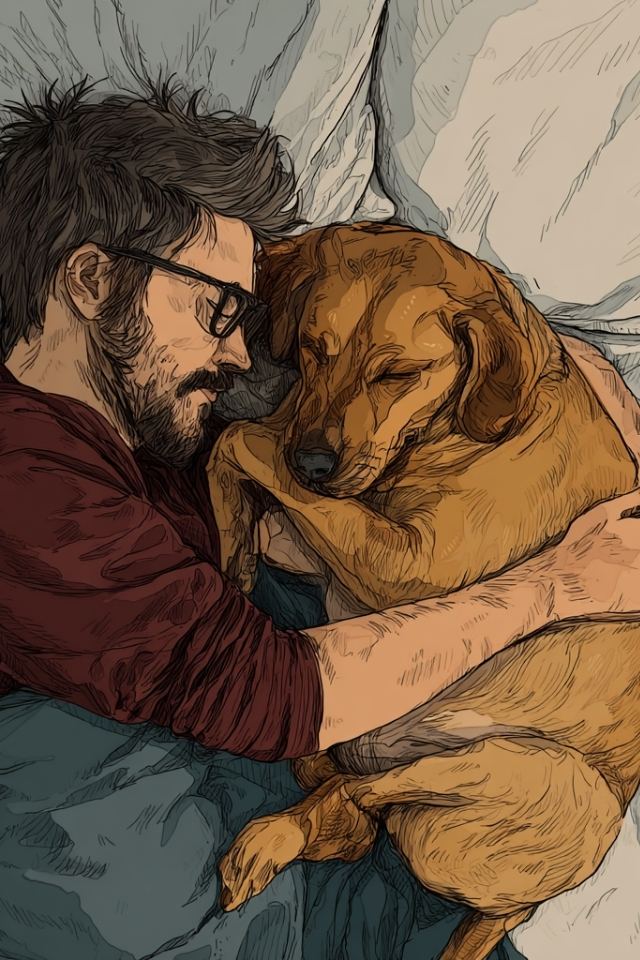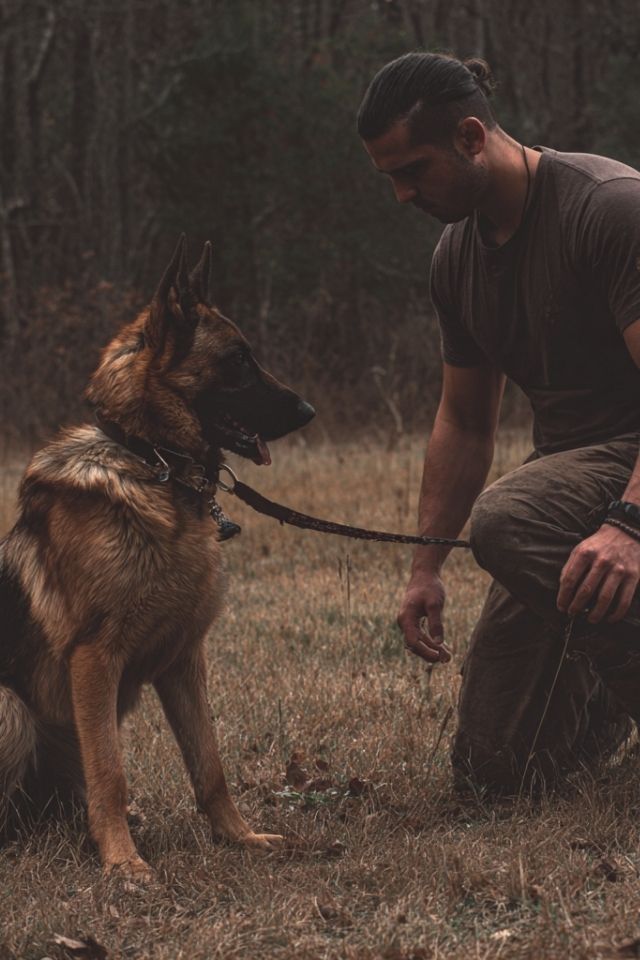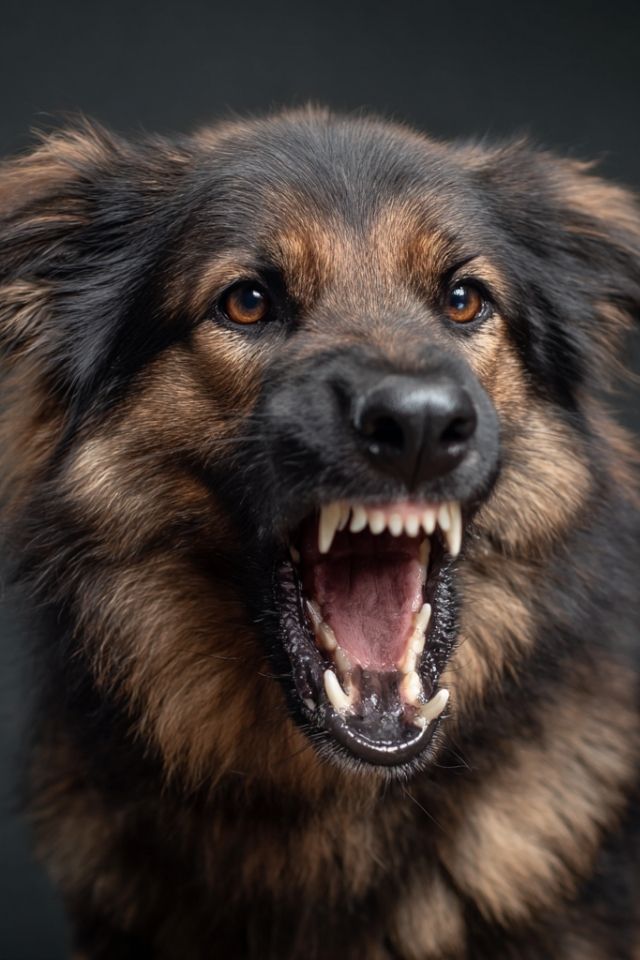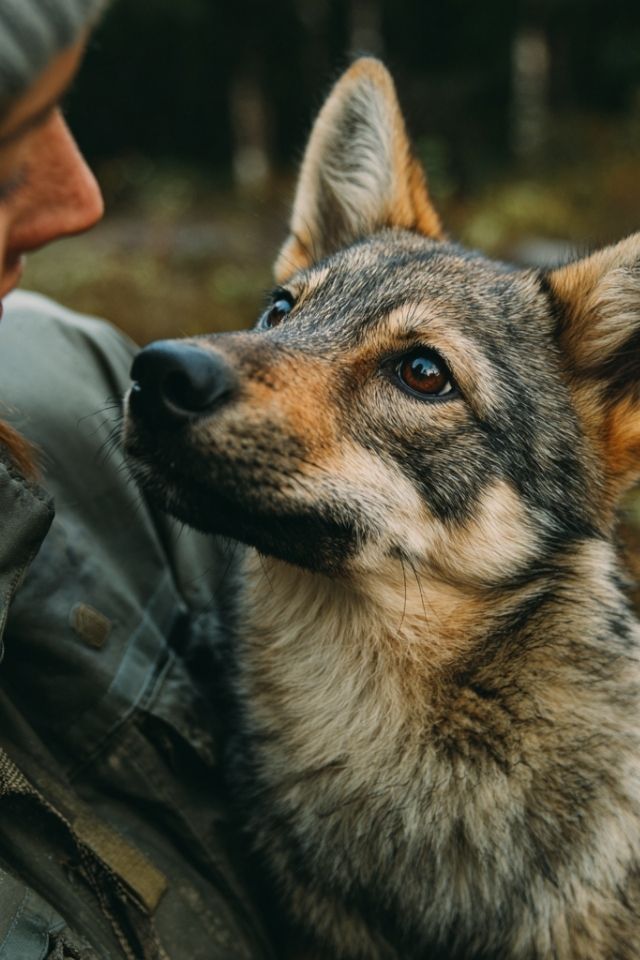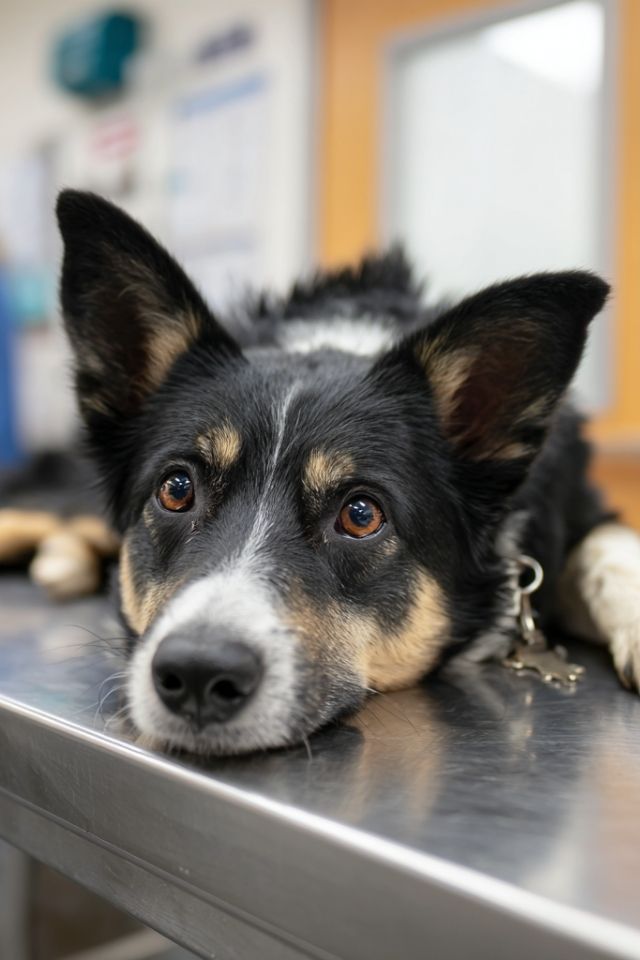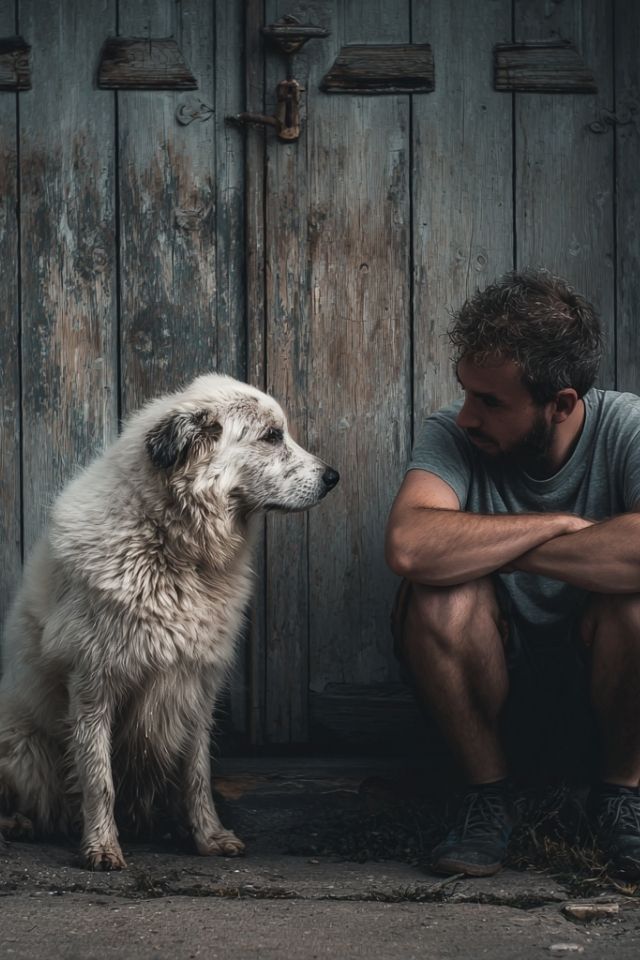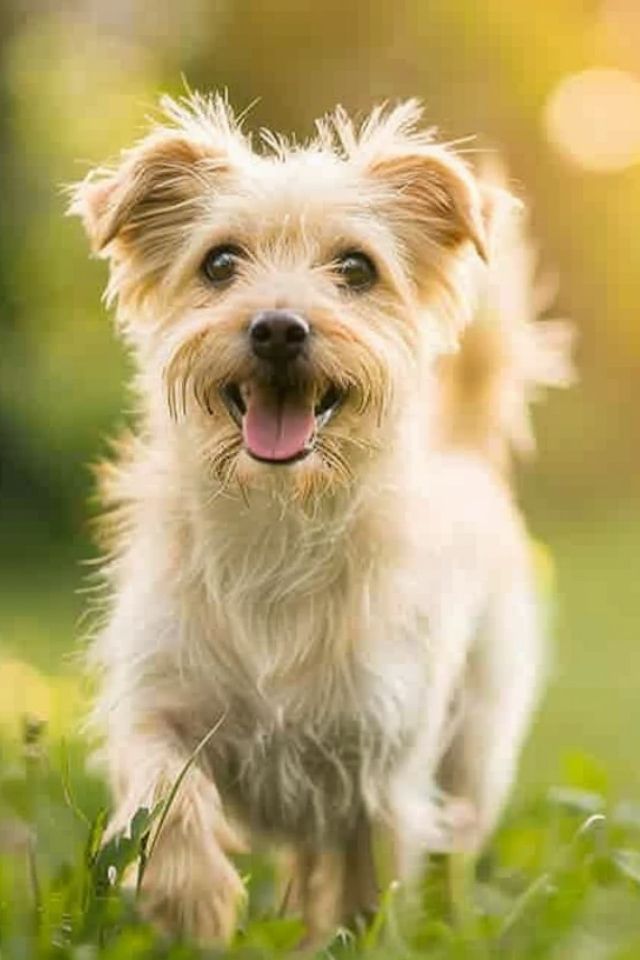When Love Wears Too Close
There’s a moment every morning when Maya’s eyes open—not to the sunrise filtering through her window, but to the steady breathing of her Border Collie, Scout, who has spent the night pressed against her bedroom door. His vigilance never wavers. Even in sleep, some part of him remains tethered to her presence, an invisible thread that tightens with every movement she makes.
This is love, certainly. But it’s love wrapped in something else—a desperate quality that transforms devotion into a kind of beautiful burden. Scout doesn’t just want to be near Maya; he needs it the way lungs need air. And in that need lies a story as old as the first wolf who chose to sleep by a human fire, yet as complex as the neural pathways that fire in a modern dog’s brain when their person walks away.
The dance between healthy attachment and emotional dependence is one we rarely discuss, perhaps because it touches something tender in us—that place where love and need intertwine so tightly we can’t tell them apart. But understanding this dance, this delicate balance, opens a doorway to something profound: the possibility of connection without chains, love without panic, and a bond that strengthens through trust rather than tightens through fear. 🐾
The Architecture of Attachment
In the beginning, there is warmth. A puppy’s first eight weeks write a blueprint in neural pathways that will echo through a lifetime. Picture the nervous system as a garden—early experiences are the gardeners, deciding which paths become highways and which remain overgrown trails.
When Scout was five weeks old—too young to leave his mother, but life doesn’t always follow textbooks—he found himself in a cardboard box outside a shelter. Those missing weeks of maternal comfort, of littermate wrestling and warmth, left gaps in his emotional architecture. Where secure dogs build foundations of “the world is safe,” Scout built walls of “never let go.”
Scientists call it the hypothalamic-pituitary-adrenal axis, but think of it as your dog’s internal weather system. In secure dogs, storms pass through—cortisol rises, then falls like summer rain. But in dogs like Scout, the storm never quite ends. Their bodies remain braced for abandonment, even when surrounded by love. The oxytocin that should soothe instead becomes another source of desperate need—each dose requiring closer proximity, tighter bonds, until love itself becomes a kind of addiction.
This isn’t weakness or manipulation. It’s biology shaped by experience, genes methylated by early trauma, creating a dog whose very cells remember loss and guard against it with every fiber of their being.
Reading the Silent Language
Watch a securely attached dog navigate their world, and you’ll see something like a dancer who knows the music will continue even when they spin away from their partner. They check in—a glance, a brief touch—then orbit out again, confident in the gravitational pull that will bring them back.
But Shadow dogs—those who’ve learned that distance equals danger—speak a different language entirely:
Their eyes track you with the intensity of a shepherd watching for wolves. Not the casual awareness of companionship, but the hypervigilance of one who believes the world ends when you disappear from view. They position themselves always between you and exits, their bodies forming living barriers against your potential departure.
The whine that escapes when you close the bathroom door isn’t melodrama—it’s genuine anguish, the sound of a soul that cannot conceive of wholeness in separation. Their breathing quickens not from exertion but from the effort of existing without their anchor. Some develop what I call “doorway shadows,” dark patches worn in carpet where they wait, always waiting, for your return.
Maya noticed Scout’s “tell” one Tuesday morning: a subtle tremor in his back legs that began the moment she reached for her work bag. His body knew the routine before his mind did, already flooding with stress hormones at the mere suggestion of solitude.
The Path of Patient Transformation
Healing doesn’t come through force or sudden revelation. It arrives in moments so small you might miss them—the first time your dog chooses their bed over your feet, the morning they finish breakfast while you shower, the day they discover that the world continues to exist even when you’re in another room.
Maya began with what I call the “Invisible Leash” principle—teaching Scout that connection transcends physical proximity. She started with micro-distances, sitting just beyond touch while Scout remained on his bed. Two seconds. Then five. Then ten. Not abandonment, but expansion—stretching the space between them like a muscle learning new range.
The “Soul Recall” technique became their evening ritual. Instead of Scout’s desperate shadowing, Maya taught him to find his own calm first, then reconnect. She’d send him to his bed with a puzzle toy, allowing him to discover that engagement could exist without her participation. When he settled into that activity—truly settled, not just enduring—she’d call him back for connection that felt like choice rather than compulsion.
Building confidence in a clingy dog is like teaching someone to swim who’s convinced they’ll drown. You don’t throw them in the deep end; you show them they can float. Maya created “independence islands” throughout their day—structured moments where Scout could practice being alone while safe. A Kong filled with frozen peanut butter became not just distraction but discovery: “I can feel content without her touch.”
The NeuroBond Revolution
True change happens at the cellular level, in the space between synapse and soul. The NeuroBond approach recognizes that we’re not just training behaviors—we’re literally rewiring neural pathways carved by early experience.
Consider the role of environment: Maya transformed her home into a sanctuary of graduated comfort. Safe spaces in every room where Scout could retreat—not to hide, but to practice the radical act of self-soothing. She introduced calming frequencies, those subtle sonic embraces that tell the primitive brain “all is well.” Pheromone diffusers became invisible comfort, molecules of mother-memory floating through the air.
But the deepest work happened in Maya herself. Dogs read our inner weather with stunning accuracy. Every time she left feeling guilty, Scout’s anxiety confirmed his worst fears—that separation was indeed catastrophic. When Maya learned to project calm confidence, to leave with the energy of “I’ll return” rather than “I’m sorry,” Scout’s nervous system began to believe it too.
The supplement support—L-theanine for calm without sedation, adapted herbs for resilience—these weren’t crutches but scaffolding, supporting the neural renovation taking place. Like a building under construction, Scout needed temporary support while permanent structures were built. 🧠
When Professional Guidance Becomes Sacred
There comes a moment in some journeys where love alone isn’t enough. When Scout began showing signs of self-harm—bloody paws from desperate scratching at doors—Maya recognized they’d reached the edge of what dedication could accomplish alone.
The veterinary behaviorist who entered their story brought more than medication. She brought the gift of understanding—that Scout’s brain, shaped by early trauma, might need pharmaceutical support to create the calm necessary for learning. The fluoxetine wasn’t failure; it was the biochemical breathing room that allowed Scout’s nervous system to finally experience what “safe” felt like.
Working with a certified trainer who understood the Invisible Leash philosophy, Maya learned to read Scout’s micro-signals—the slight ear position that preceded panic, the breathing pattern that indicated rising stress. Together, they created a new language, one built on trust rather than desperation.
The Inheritance of Souls
Some dogs come into this world primed for independence—the working breeds whose ancestors made decisions on distant hillsides, whose genes carry the memory of autonomous purpose. Others arrive designed for laps and proximity, their DNA spelling out “companion” in every cell.
Scout’s herding heritage meant his clinginess carried an extra dimension—not just need but responsibility. In his mind, Maya was a sheep who kept wandering off, and his anxiety was the frustrated urgency of a shepherd who couldn’t do his job. Understanding this helped Maya provide what Scout really needed: not just presence but purpose, structured activities that channeled his vigilance into something productive.
Age, too, plays its role in this dance. Puppyhood’s plasticity offers windows of opportunity that slowly close. Adolescence brings its own storms of insecurity. And in senior years, cognitive changes can transform previously confident dogs into shadows of worry. Each life stage requires its own approach, its own patience, its own form of love.
The Alchemy of Connection
Six months into their journey, Maya woke one morning to silence. No breathing at the door. Panic flashed—was Scout okay? She found him in the living room, sprawled on his favorite chair, watching birds through the window. He glanced at her, tail wagging, then returned to his observation. It was a small moment. It was everything.
This is the paradox of healing clingy dogs: the goal isn’t to need each other less but to choose each other more freely. When desperation transforms into decision, when proximity becomes preference rather than panic, something magical happens. The bond doesn’t weaken—it deepens, freed from the weight of anxiety to become something lighter, stronger, more beautiful.
Scout still follows Maya sometimes. But now it’s the following of friendship, not fear. He still celebrates her returns, but with joy rather than relief. Their connection has evolved from a lifeline to a love line—strong enough to stretch across distance, flexible enough to allow for individual growth.
The shadow at your heels can learn to walk beside you instead. The love that clings can learn to trust. And in that transformation lies a truth as profound as any in the human-dog relationship: sometimes the greatest act of love is teaching those we cherish that they are whole, even when we’re apart. That’s the ultimate gift of the NeuroBond—not just connection, but the confidence to know that connection endures beyond sight, beyond touch, into that invisible space where all true bonds live. 🧡
